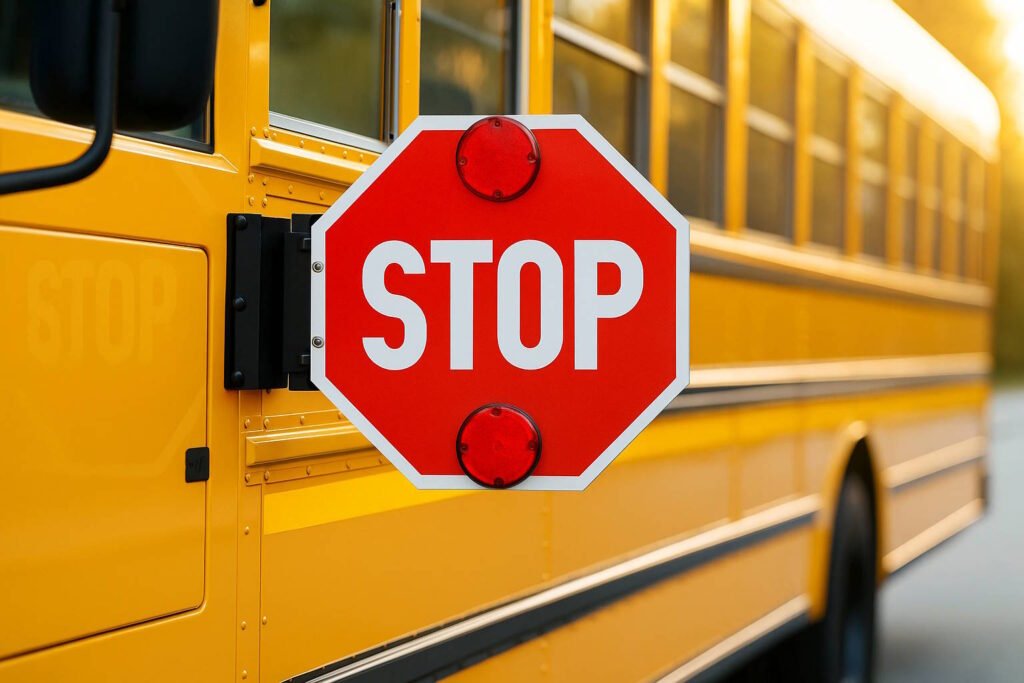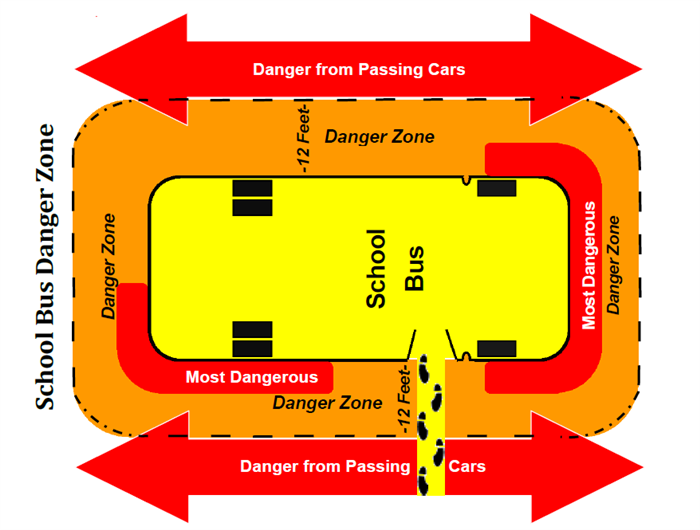School buses are a critical part of our educational infrastructure, safely transporting approximately 25 million students to and from school each day in the United States. The distinctive yellow color, warning lights, and stop arms are designed to make school buses highly visible, but their safety ultimately depends on all drivers following proper laws and protocols.
School Bus Stopping Requirements
When You MUST Stop
On roads with 2-3 lanes, all traffic in both directions must stop when a school bus displays flashing red lights and extends its stop arm. This applies regardless of which direction you’re traveling relative to the bus. Vehicles must remain stopped until the bus retracts its stop arm, turns off flashing red lights, and begins moving. Always maintain a stopping distance of at least 15 feet from the bus.
On roads with 4 or more lanes, only vehicles traveling in the same direction as the bus must stop. Traffic moving in the opposite direction on the other side of the road may proceed with caution. This is the only situation where passing a stopped school bus with its stop arm extended is legal.
School Bus Signaling System
Modern school buses use a sophisticated signaling system to communicate with other drivers:

Yellow/Amber Warning Lights are activated 100-300 feet before a planned stop. These signals to drivers that the bus is preparing to stop to load or unload children. All drivers should slow down and prepare to come to a stop. On many roads, speed must be reduced to no more than 20 mph.

Red Flashing Lights and the Stop Arm are activated when the bus has stopped. This indicates children are either boarding or exiting the bus. All required traffic must come to a complete stop and remain stopped until all children have safely crossed and the bus signals are deactivated.
Legal Consequences for Violations
Penalties for illegally passing a stopped school bus are severe and may include license suspension for up to 180 days for a first offense in many states, fines ranging from $250 to $1,000 or more, points added to driving record, mandatory court appearance, potential for enhanced penalties if violation occurs in a designated school zone, and possible criminal charges if violation results in injury.
Many school buses now have stop-arm cameras that automatically record vehicles that illegally pass, making enforcement more consistent and widespread.
The Danger Zone

The “danger zone” extends approximately 10 feet around all sides of the bus, with particular concern for the front of the bus, where children crossing may not be visible to the driver; the right side, where children boarding or exiting are at risk from passing vehicles; the rear of the bus, which is completely blind to children who might cross behind; and the left side, where passing traffic poses the highest risk of severe injury.
Most student fatalities related to school transportation occur when children are entering or exiting the bus within this danger zone, not while riding on the bus itself.
Driver Responsibility in School Zones
Beyond stopping for buses, drivers should strictly obey reduced speed limits in school zones (typically 15-25 mph), watch for crossing guards and follow their signals, never block crosswalks, yield to pedestrians (especially children), be particularly vigilant during arrival times (7:00-9:00 AM) and dismissal times (2:00-4:00 PM), eliminate distractions while driving in school zones, and be prepared for unexpected actions from young pedestrians who may dart into traffic.
Best Practices for Parents and Students
Parents should teach children these important safety guidelines: arrive at the bus stop 5 minutes early, stand at least 6 feet (three giant steps) from the curb, wait until the bus completely stops and the driver signals before approaching, if crossing in front of the bus, walk at least 10 feet ahead of the bus so the driver can see you, never walk behind the bus, if dropping something near the bus, tell the driver rather than trying to retrieve it, and always use handrails when boarding.
Recent Trends and Technology
Modern school bus safety now incorporates extended stop arms that physically block adjacent lanes, additional sets of flashing lights for better visibility, external cameras to capture stop arm violations, GPS tracking systems that allow parents to monitor bus location, and internal camera systems to monitor student behavior.
By understanding and following these laws, all drivers play an essential role in protecting our most precious cargo, our children, as they travel to and from school each day.


